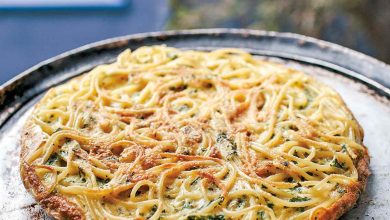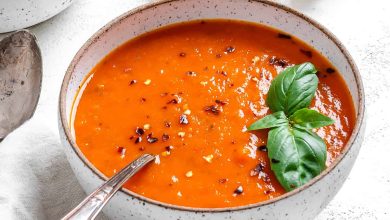🍑 Asian Plum Sauce 🍑
Asian plum sauce, also known as plum sauce, is a delicious and versatile condiment that adds a sweet and tangy flavor to a wide variety of Asian dishes. It’s commonly used in Chinese cuisine as a dipping sauce for spring rolls, dumplings, or as a glaze for stir-fried dishes. Here’s some detailed information on Asian plum sauce:
History:
The origins of plum sauce can be traced back to China, where it was traditionally made from fresh plums. Over time, the sauce’s popularity spread to other Asian countries and eventually to the West. Today, plum sauce is widely available in stores, and it has become a staple in many kitchens.
Components:
Asian plum sauce typically consists of the following key components:
-
Plums: The primary ingredient is plums. They can be either fresh or dried, depending on the recipe.
-
Sweeteners: Sugar, honey, or other sweeteners are added to give the sauce its sweet taste.
-
Vinegar: To provide the characteristic tanginess, vinegar (usually rice vinegar or white vinegar) is included.
-
Spices: Common spices and flavorings include ginger, garlic, and sometimes red pepper flakes for a hint of heat.
-
Soy Sauce: In some recipes, soy sauce is added for depth of flavor and a salty umami taste.
Steps to Prepare Asian Plum Sauce:
Here’s a basic recipe for making Asian plum sauce at home:
Ingredients:
- 2 cups of pitted and chopped plums (fresh or dried)
- 1 cup of sugar
- 1/2 cup of water
- 1/4 cup of vinegar (rice vinegar or white vinegar)
- 1-2 cloves of minced garlic
- 1 tablespoon of grated ginger
- 1-2 tablespoons of soy sauce (optional)
- Red pepper flakes (optional, for heat)
Steps:
-
Combine plums, sugar, water, vinegar, garlic, and ginger in a saucepan.
-
Bring the mixture to a boil over medium heat. Stir to dissolve the sugar.
-
Reduce the heat and let it simmer for about 20-30 minutes, or until the plums have softened and the mixture thickens.
-
If you prefer a smoother texture, you can use an immersion blender to puree the sauce. For a chunky sauce, you can leave it as is.
-
If you want to add a spicy kick, incorporate red pepper flakes to taste.
-
Let the sauce cool before transferring it to a clean, airtight container. Store it in the refrigerator.
Time Needed:
The preparation time for Asian plum sauce is approximately 10 minutes, and the cooking time varies from 20 to 30 minutes, depending on how thick you want your sauce. Cooling and storing will take additional time. In total, you can expect to spend around 40-60 minutes.
Enjoy your homemade Asian plum sauce! It’s a delightful addition to a variety of dishes and can bring a burst of sweet and tangy flavor to your meals. 🥢🍖🥡
Certainly! Here are some nutrition facts and health information for Asian plum sauce:
Nutrition Facts (per 1 tablespoon serving):
- Calories: Approximately 30-40 calories
- Total Fat: 0 grams
- Cholesterol: 0 milligrams
- Sodium: 10-100 milligrams (varies based on the amount of soy sauce added)
- Total Carbohydrates: 8-10 grams
- Sugars: 6-9 grams
- Dietary Fiber: 0-1 gram
- Protein: 0-1 gram
Health Information:
-
Low in Fat: Asian plum sauce is generally low in fat, which makes it a healthier condiment option.
-
Calories: The sauce is moderately calorie-dense, primarily due to the sugar content. However, it’s usually used in small quantities as a condiment.
-
Sugars: The main source of calories in plum sauce comes from sugars. It’s sweetened to achieve its characteristic flavor, so it’s best enjoyed in moderation, especially for those watching their sugar intake.
-
Sodium: The sodium content can vary based on the amount of soy sauce added. It’s generally not extremely high in sodium, but it’s essential to be mindful if you’re on a low-sodium diet.
-
No Cholesterol: Asian plum sauce is cholesterol-free, which is a positive aspect for heart health.
-
Limited Fiber and Protein: The sauce contains minimal fiber and protein, as it’s primarily a sweet and tangy condiment.
Overall, Asian plum sauce is a flavorful addition to many dishes but should be used in moderation due to its sugar content. It’s relatively low in fat and doesn’t contain cholesterol. However, those with dietary restrictions (e.g., low-sugar or low-sodium diets) should consume it in smaller quantities. Enjoy it as part of a balanced diet for added flavor without overindulging.








